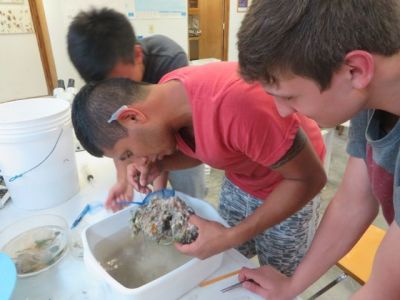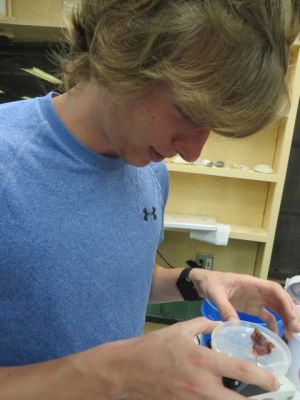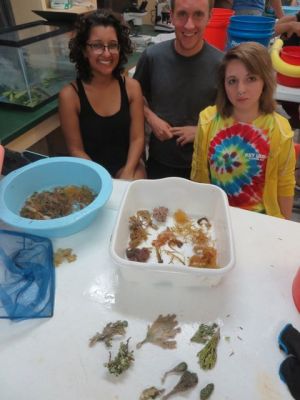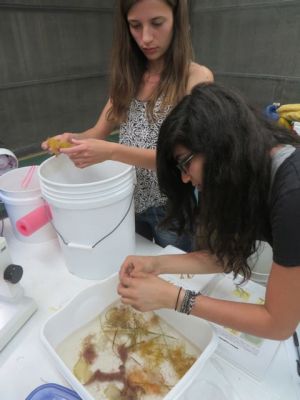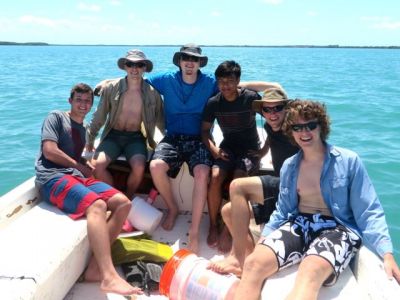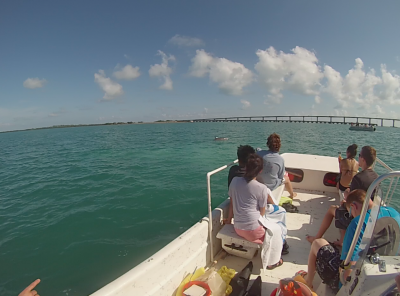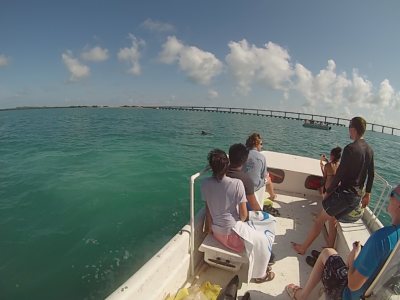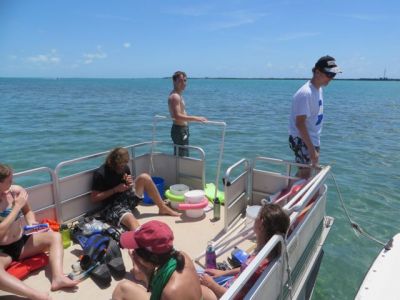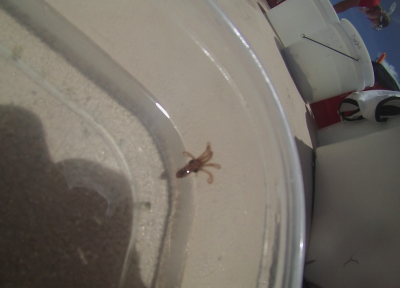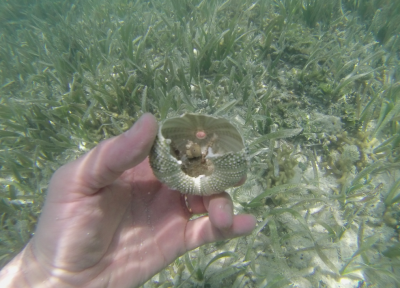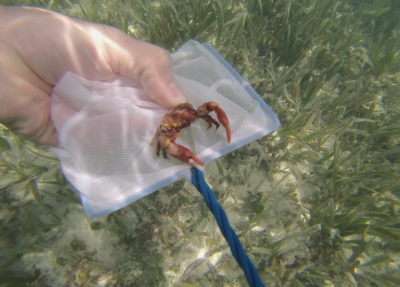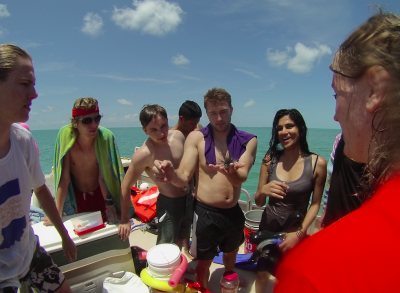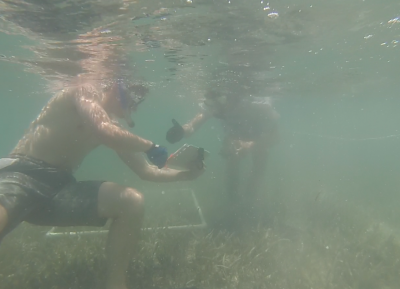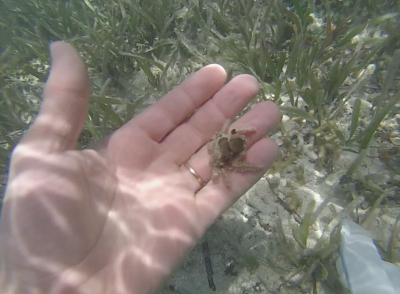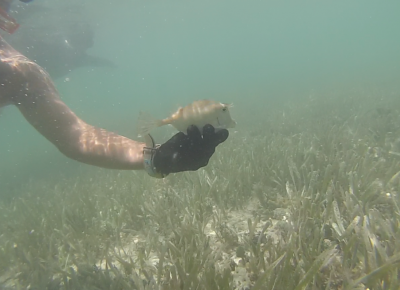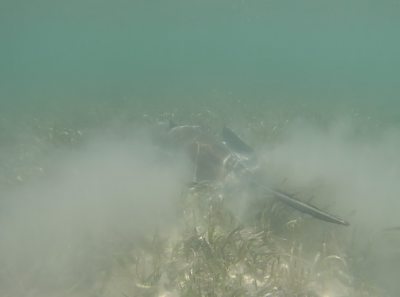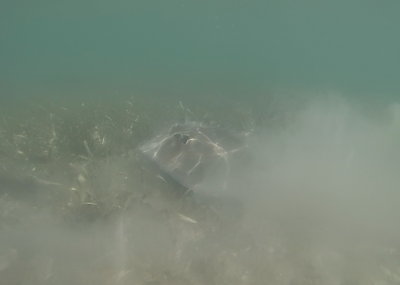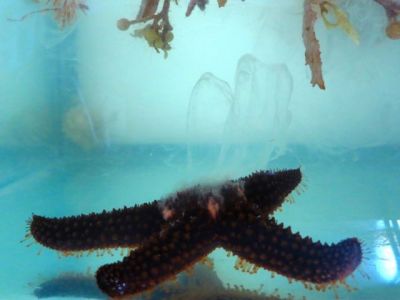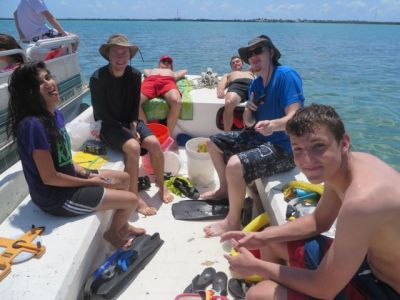April 29th
Today was another exciting and tiring day! Every morning a different student offers a reflection on something they’ve been thinking about with regard to the class, and today Claire Frederick talked about how we college students are just like 5-year-olds when in marine environments –clumsy at getting around but fascinated and inspired by the smallest of things. We are slowly learning to snorkel without running into each other and have been swallowing smaller quantities of saltwater with each expedition.
Our morning lecture explored the epipelagic zone, which is the upper portion of the open ocean that comprises the majority of the earth’s surface. By midmorning we were back on the boat and heading towards a mudflat called Old Dan Bank. Since the study site was a twenty-minute trip by boat, we packed our lunches and stayed until early afternoon. On the way, however, we were visited by a small group of dolphins! There were many “oohs” and “ahhs” on the boats as they surfaced intermittently for ten minutes. We were all grateful that our classroom includes dolphin territory!
At Old Dan Bank, we split up into groups and had to devise our own research questions. Upon getting into the water, I was promptly attacked by an audacious little fish that was fixated upon my knee. I probably overreacted (after thrashing around, I jumped back in the boat), but believe me; everything is more scary underwater! I quickly regained my courage, reentered the water, and scared off the persistent fish with my attempts to net it. Our research group decided to investigate how sponge type and density varied with water depth. Along with our research, we saw some great marine life –a small sea turtle, a large sting ray, a sea urchin with long spikes, and some colorful fish.
On the way back to the lab we put our newfound knowledge about the epipelagic zone into practice by performing plankton tows. This involved dragging a fine mesh net behind the boat and collecting free floating phytoplankton and zooplankton. In the evening, after a lecture on the phylum Porifera (sponges), we looked at what we found under microscopes, discovering many fish larvae, copepods, and arrow worm larvae.
The night was concluded with a potluck supper in which each of the four student cooking groups provided a dish for the class. Sharing stories over our communal meal was certainly a highlight of the day! While we are all tired and sunburnt to varying degrees, we are excited about being further immersed in the marine environment again tomorrow.
– Ben Wiebe ’18





